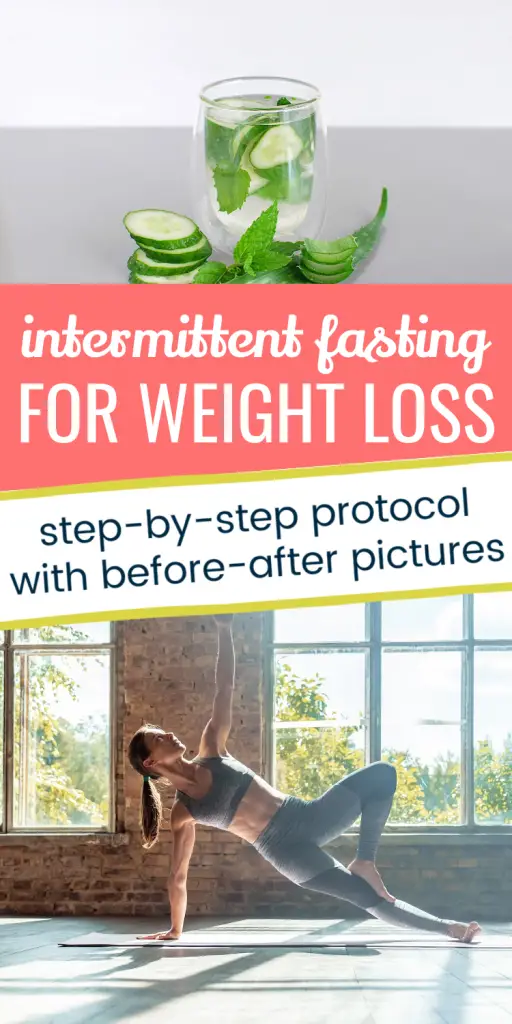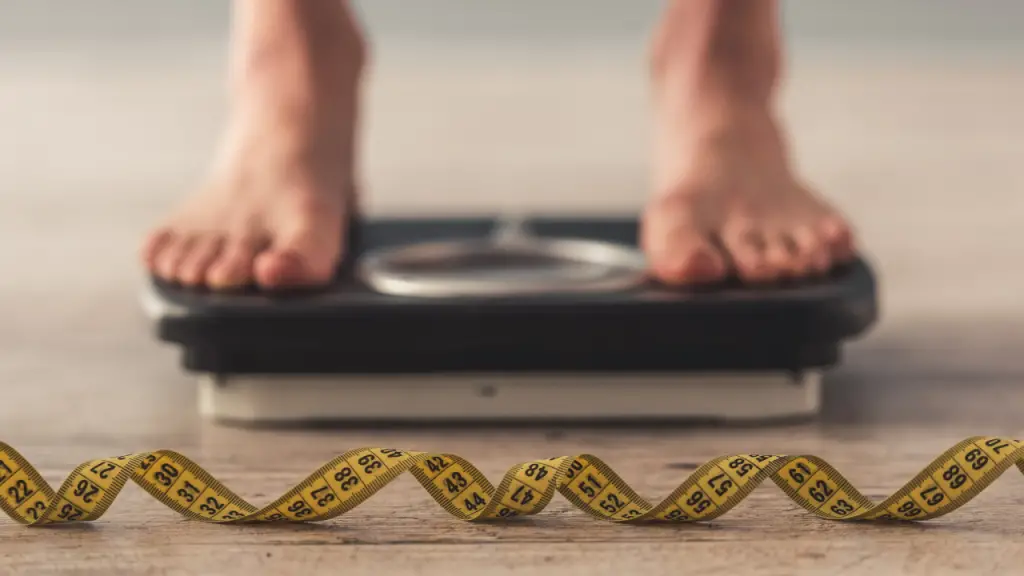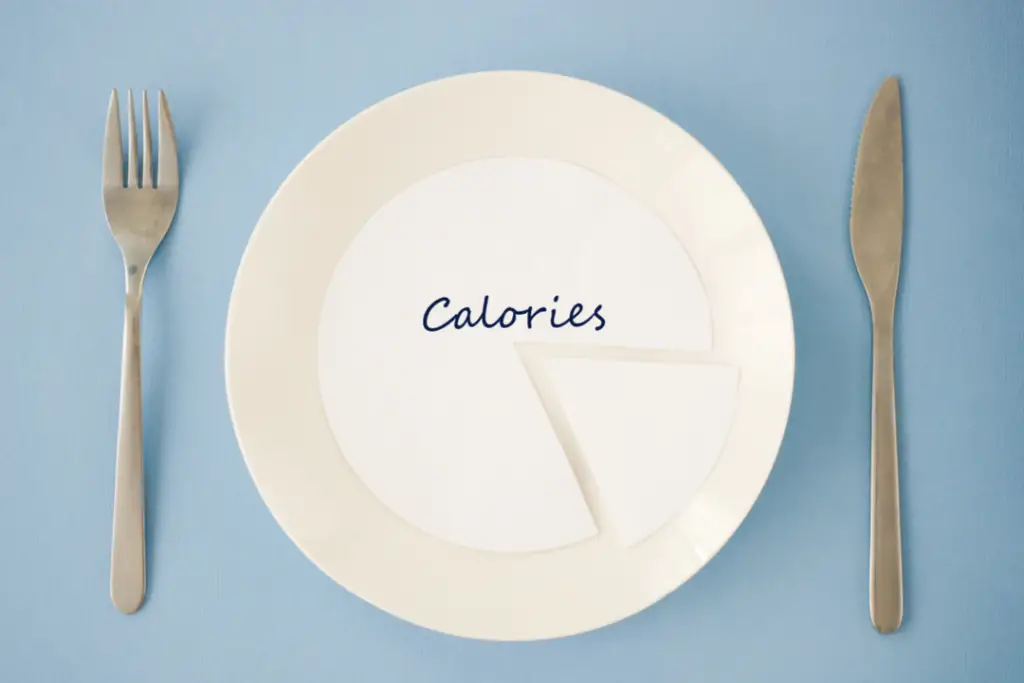Today, as I share my intermittent fasting for weight loss results, let me give you a bit of background: I started this website in February 2020 after finding that I could finally achieve my health goals through fasting. I had been Paleo for two years (and had a Paleo blog, which is still online) but hit a wall. My health had become stagnant, and I had been gaining weight.
Fortunately, things improved after I discovered how to take advantage of intermittent fasting, even though it hadn’t worked for me in the past. In this post, I am happy to reveal my intermittent fasting results, explain the number one mistake most women make when they try to lose weight using intermittent fasting and share a doable timeline to maximize your chance of success.
Intermittent Fasting for Weight Loss Results
Sharing my intermittent fasting for weight loss results gives you an idea of what to expect. It helps you develop your intermittent fasting for weight loss timeline to optimize your success.
Intermittent Fasting Results 1 month
After one month, I hadn’t lost any weight but had lost much of my belly fat. At this point, I had done one modified fast and had been experimenting with the 5:2 Intermittent Fasting Method and the Eat Stop Eat Method.
I received comments about losing weight because I looked like I had lost weight.
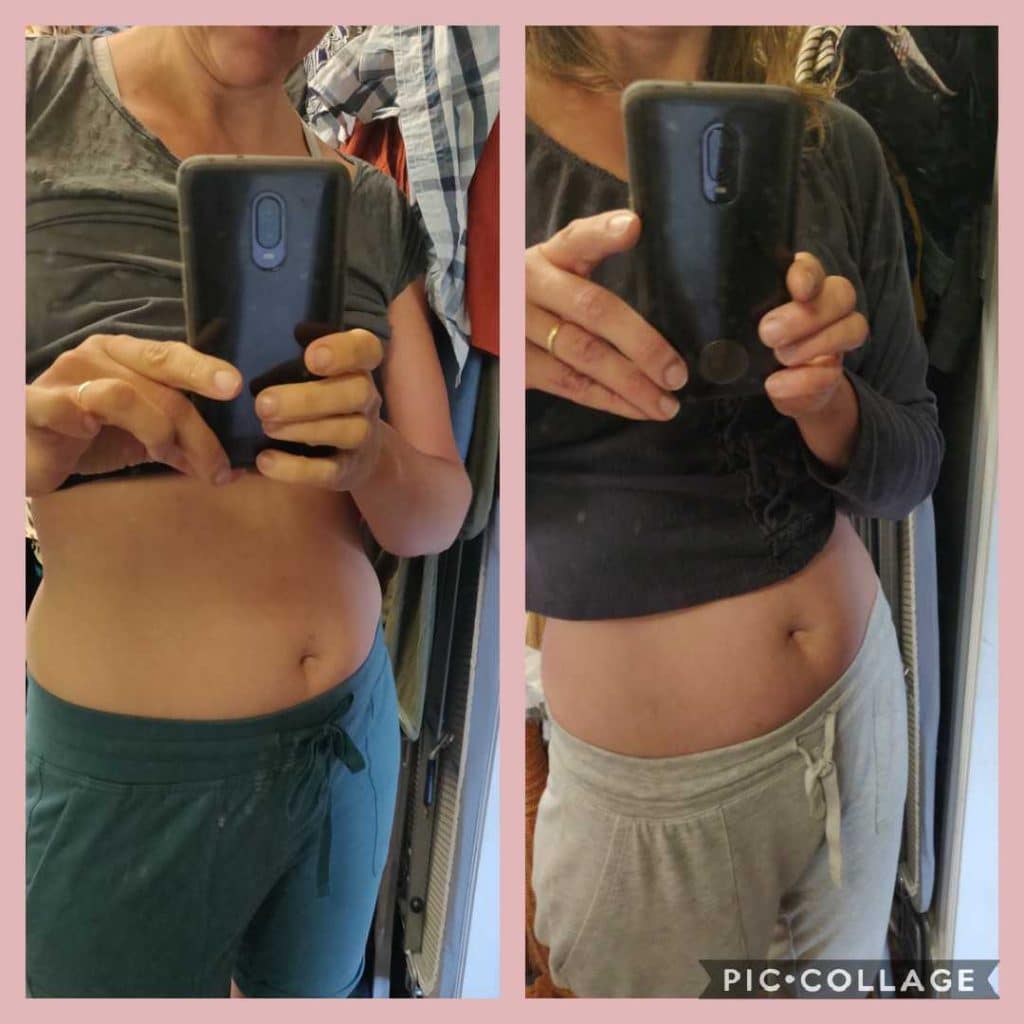
20/4 intermittent Fasting Weight Loss Results 1 month
Even though my experience did not cause much weight loss after one month, I was experimenting and did not follow a specific step-by-step protocol like the one I am sharing today. My most recent coaching client lost 5 pounds on the 20/4 intermittent fasting method after one month.
How Much Weight Can You Lose In a Month With Intermittent Fasting?
Even though some women will lose 5 to 10 pounds after their first month of practicing intermittent fasting the right way, that is not typically the weight loss goal I recommend. I encourage women to take a slow and steady approach, which means a weight loss of between 2 and 5 pounds a month, particularly if you have less than 20 pounds to lose. During my 20/4 weight loss journey, I lost 2 pounds a month on average. Some months, I would not lose any weight! And guess what? I didn’t think intermittent fasting wasn’t working in those months. Do you know why? Because I felt terrific! I was experiencing food freedom and was no longer a slave to my food cravings.
20/4 Intermittent Fasting for Weight Loss Results – Six Month
With the warrior diet, I started settling into a more comfortable intermittent fasting routine in my second month. The best part about the Warrior diet is that I could start eating around 4 pm and enjoy all my favorite foods until about 8 pm. Most days, I didn’t feel too hungry during the day (with practice). I would take my weekends off to enjoy breakfast (I still liked breakfast foods back then).
After six months, my 20/4 intermittent fasting weight loss results were probably around 10-12 lbs. Keep in mind that my weight loss goal was around 20 lbs. It’s common to lose weight much slower if you need to lose only 20 lbs or less. That’s why I put so much emphasis on having realistic weight loss expectations. We want to achieve slow, steady, and sustainable weight loss.

20/4 Intermittent Fasting for Weight Loss Results One Year
After about a year, I achieved my weight loss goal of 20 lbs. That’s when I decided to create my 30-Day Intermittent Fasting Transformation Program. I thought it would be a practical and affordable way to help other women achieve similar results.
My intermittent fasting protocol has been incredibly effective, and I was very proud of what I had accomplished: I lost 20 lbs using intermittent fasting after 40. I felt better than ever before. And that, even though I had tried to lose weight and heal my body with intermittent fasting before without succeeding.
Using my knowledge as a health coach, I devised a step-by-step formula that includes everything any woman could ever need to achieve similar results. I created PDFs, checklists, meal plans, and educational videos, and I assembled all the pieces to make the process simple and doable.
Learn more about my 30-Day Fasting Transformation here.
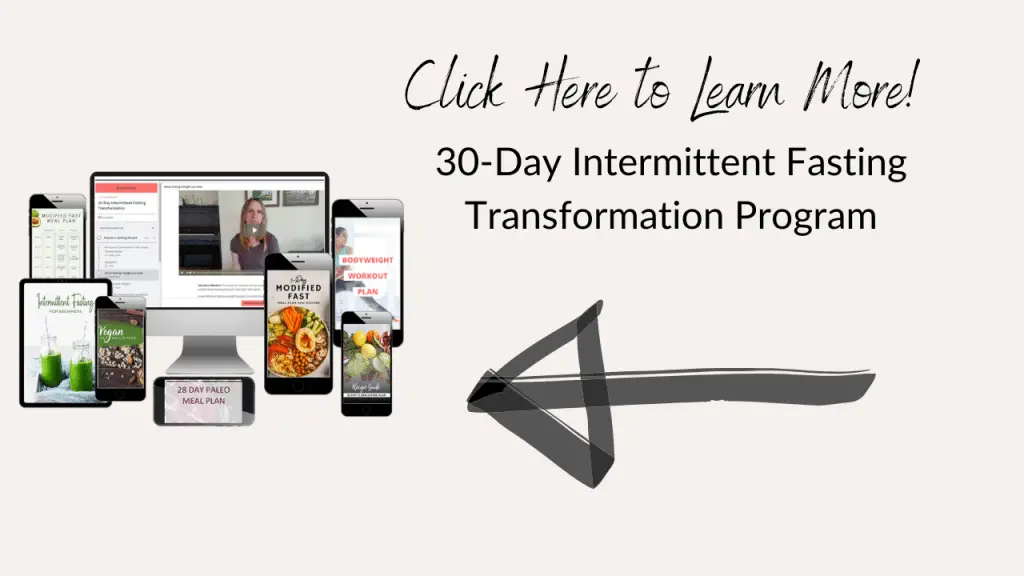
Intermittent Fasting for Weight Loss Results After Two Years
Over the following year, my intermittent fasting for weight loss results were surprising. I lost another 10 lbs! I had relaxed my intermittent fasting schedule and would fast for 20 hours only once or twice a week. Yet, I was still losing weight! Even though my goal was to lose 20 lbs, I wasn’t too upset about the continued weight loss. I am tall, 5 ’10, so losing more weight didn’t show that much.
Now, I am working on eating more and building more muscles. You may know that I took up yoga. I created a post to share my Yoga Transformation if you want to learn more.
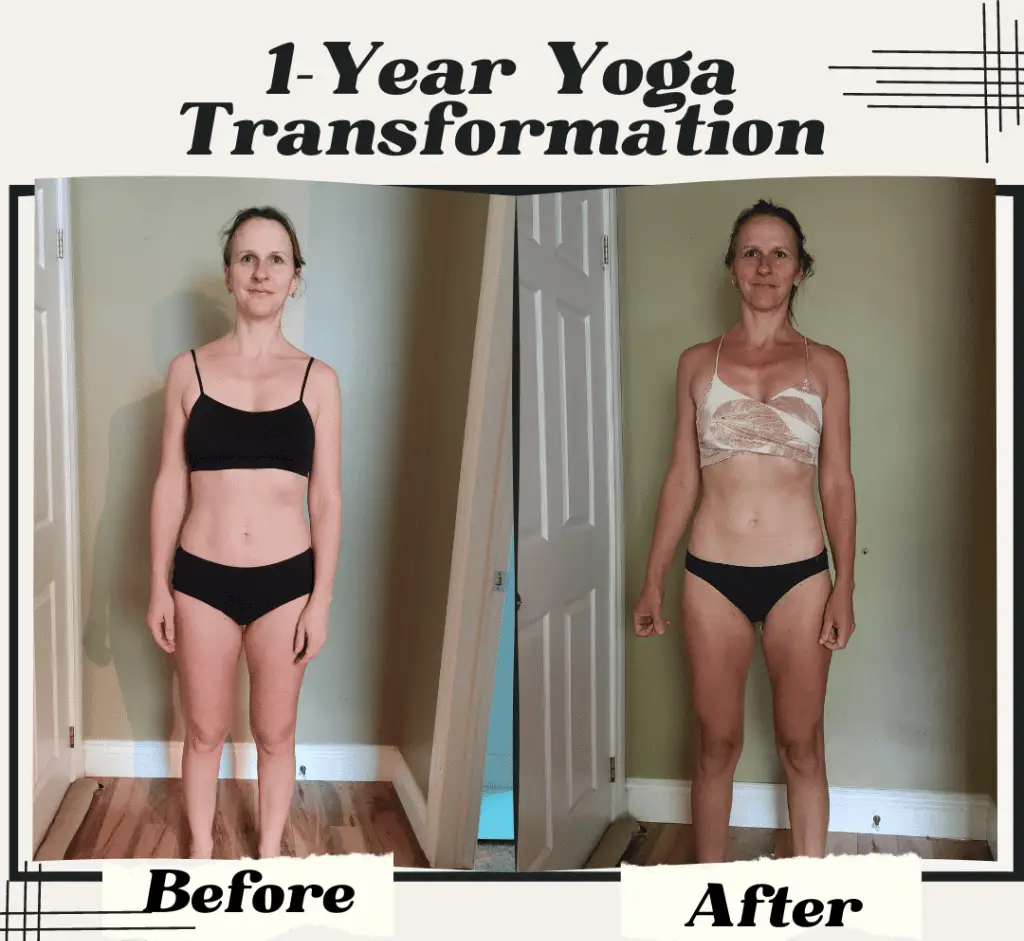
Intermittent Fasting for Weight Loss: Number One Mistake
Before discussing my weight loss timeline to optimize your results, I wanted to discuss the number one intermittent fasting mistake you should avoid: Thinking that intermittent fasting means skipping breakfast. That’s the mistake I made the first time I tried intermittent fasting.
Although the 16:8 method works for some women, most will find an 8-hour eating window too long and too easy to overeat. Moreover, a 16-hour eating window is not long enough to achieve ketosis for any length of time. Achieving ketosis on your fasting day is essential for your weight loss success and to heal your body as you improve your insulin sensitivity.
Weight Loss Timeline to Optimize Your Success
The following weight loss timeline is based on my intermittent fasting for weight loss results.
1. Get Started on the Right Foot
Whenever you work towards a goal, measuring your progress is crucial. Take your before photos and measurements. Set out to achieve measurable and realistic goals. Have a clear plan in mind. Having a strategy is simple if you follow my outline. However, make sure your expectations are realistic as well. Remember, my intermittent fasting weight loss resulted in a weight loss of about 20 lbs in a year.
2. Become Fat-Adapted
Many women struggle with losing weight because they have become insulin-resistant and carb-dependent. Intermittent fasting will help remedy that, but a modified fast will kickstart your healing and weight loss. A modified fast takes advantage of a short-term (5 days) severe calorie restriction and a specific macronutrient ratio to trigger autophagy and achieve ketosis.
I have tons of free resources on this site for those who want to do a modified fast. You can also join my private modified fasting Facebook group for additional resources and support (membership included with my Fasting With Intention Program).

Modified Fast Alternative
I love the concept of modified fasting. It makes so much sense! Moreover, it kickstarted my weight loss without any intermittent fasting when I started three years ago. However, modified fasting is hard, and you need to find the inner motivation and discipline it takes. Even though I did three modified fasts at the beginning of my weight loss journey, I haven’t been able to replicate this achievement since reaching my goal weight. The longevity aspect of the many benefits your will receive from modified fasting hasn’t been enough to motivate me now that I have no weight to lose.
The good news is that I have an alternative for those who feel that eating only 800 calories for five days will be too hard. Instead, you can go on a 7-10 day keto cycle. Once you become fat-adapted, you are ready to experiment with intermittent fasting.
Check out my keto meal plan (it does not include a breakfast meal, which doesn’t mean you can’t have breakfast. You can eat breakfast if you want.
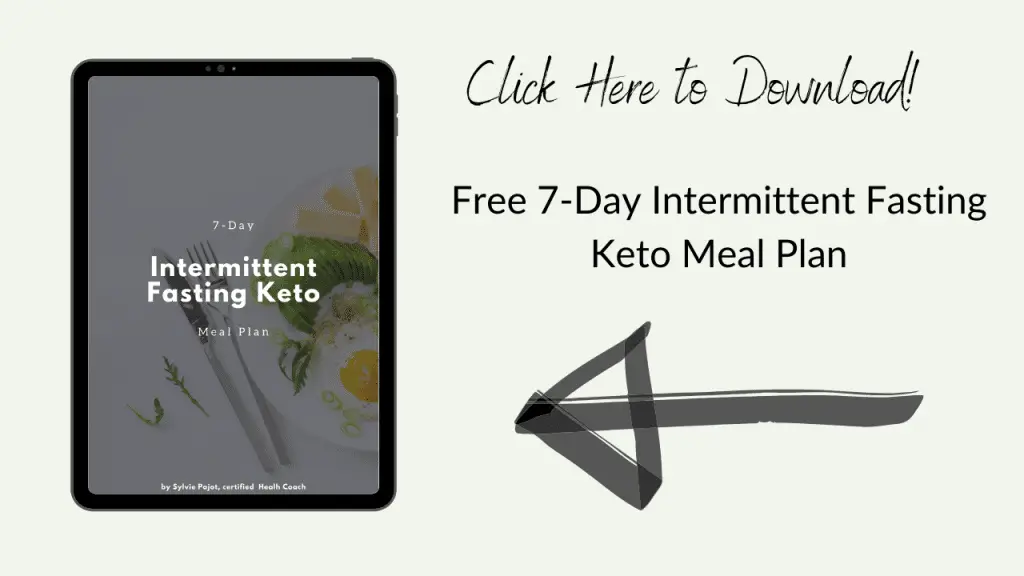
3. Pick the Right Intermittent Fasting Method
When you pick your intermittent fasting method, I recommend you first try less frequent but longer fasts. You want to make sure you achieve ketosis on your fasting days. Why? Because once you become fat-adapted through a modified fast or a keto cycle, you want to maintain your metabolic flexibility with intermittent fasting. This will require some biohacking.
Best Intermittent Fasting Method for Weight Loss
As you pick your intermittent fasting method, it is helpful to understand how intermittent fasting works. When you know the benefits of intermittent fasting and its mechanism, you can choose the intermittent fasting method that will yield these benefits. As you may have guessed, intermittent fasting isn’t a magic bullet. It works the same way as calorie restriction in that you will end up creating a calorie deficit, and that’s what makes you lose weight. Does it provide other benefits over continuous calorie restriction? Most reviews of clinical trials will tell you NO.
However, remember that these reviews don’t consider what I am teaching you in this post today. Consequently, they include intermittent fasting methods that will not trigger ketosis.
Biohacking for Weight Loss
Achieving ketosis on your fasting days reduces your appetite and enables you to kick the sugar cravings. Ketosis is typically defined as anything above 0.5 mmol/L on a ketone monitor, but that’s where the biohacking comes in. Everyone is unique, and you may need to fast longer and produce more ketones to notice these benefits. My sweet spot was between 1.0 and 1.2 mmol/L. Once you find your optimal ketosis level, you must stay there for an hour or two, which is why I picked the 20-hour fasting window. With experience, you will be able to feel that sweet spot. You will know when you switch from using glucose for energy to that optimal ketosis. Until then, you may want a ketone monitor. I recommend the Keto Mojo.
4. Exercise Efficiently Without Stressing Your Body Too Much
Stress is good. Cortisol is good. Too much of it, not so much! As you experiment with fasting, I recommend focusing on gentler workouts that increase your muscle mass. I love bodyweight workouts and yoga. In only 30 minutes a day, you will notice more tone and definition without stressing your body more necessary.
Read Starting Yoga at 40 or Later: Everything You Need to Know to learn more about the workouts I have been using.

5. Maintain Your Weight Loss
Maintaining your intermittent fasting for weight loss results will be easy. Why? Because if you do it right, your intermittent fasting lifestyle will be part of you. It’s not something you will want to stop. You may notice, like me, that you are still losing weight after reaching your goal. In that case, you will need to experiment with shorter fasting windows and your fasting frequency.
Again, it boils down to learning to listen to your body and keeping an open mind. After reaching your goal weight, you will gradually shorten your fasting window. You will likely eat your first meal before lunch most days and occasionally use longer fasts (20-24 hours) to keep food cravings at bay.
Intermittent Fasting Weight Loss Results Video
In Summary
As I am updating this post about my intermittent fasting for weight loss results, it’s been almost three years. I am settling into a comfortable routine that doesn’t involve nearly as much fasting. I eat a late breakfast most days. I keep up my yoga workouts daily, and I feel great! Whenever I notice my food cravings returning, I go on a 20–24-hour fast, and tala! It works like magic! That’s why I made it my life purpose to help other women.
I know what it’s like to want to lose weight but feel frustrated that nothing is working. To feel like you have to starve yourself to lose 2 pounds and that if you dare eat just enough not to feel hungry, you gain every little bit of weight you lost with so much effort. It sucks! But it doesn’t have to be that way!d Once you trade willpower for some biohacking using intermittent fasting, you discover what it means to experience food freedom. You can go without food without feeling miserable to heal your body. You experience the power of a natural practice that has been part of human history for ages!
Need more guidance? I also offer coaching packages.
